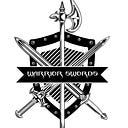The Art and Evolution of Chinese Swords: A Journey Through HistoryThe Art and Evolution of Chinese Swords: A Journey Through History
Introduction
Imagine a weapon that embodies both lethality and exquisite beauty. Chinese swords have always been that — meticulously crafted instruments that combine deadly force with breathtaking aesthetics. This article delves into the fascinating world of Chinese swordsmithing, tracing the evolution of techniques, styles, and the rich history of these iconic weapons. From the first bronze swords to sophisticated steel ones, Chinese swordsmiths honed their craft to an exceptional level, influencing neighboring cultures and leaving a lasting legacy. Beyond mere tools of war, these swords continue to captivate us as representations of strength, prestige, and masterful craftsmanship.
The Birth of the Chinese Blade
Early Materials (Bronze Age):
The earliest Chinese swords, dating back to the Shang Dynasty (1600 BC — 1046 BC), were crafted from bronze and copper. While undeniably beautiful, these metals were relatively soft, limiting their effectiveness in combat.
Advantages and Limitations of Bronze:
Bronze was readily available and easy to shape into swords, making it a practical choice for early swordsmiths. However, its softness resulted in blades that dulled quickly and lacked the strength for extended battles.
Dawn of Iron and Steel (Warring States Period):
The Warring States Period (475 BC — 221 BC) witnessed a significant advancement in metallurgy. Swordsmiths began utilizing iron and steel, resulting in lighter, sharper, and stronger swords. Steel, in particular, proved superior to bronze as it held a sharper edge for longer and withstood the rigors of combat. Chinese swordsmiths embraced these new materials, crafting exquisite swords that were both functional and visually stunning.
Technological Advancements in Metallurgy:
Discoveries like carburizing (adding carbon to iron) and improved forging techniques paved the way for creating high-quality steel, the perfect material for crafting exceptional swords.
Transition from Bronze to Iron/Steel:
The shift from bronze to iron and steel wasn’t immediate. Swordsmiths continued using bronze swords even after the introduction of their iron and steel counterparts. It was only when the superiority of steel became undeniable that its use became widespread.
The Refinement of the Craft: Techniques and Styles
Forging Techniques:
Chinese swordsmiths employed various techniques to create their masterpieces. Pattern welding, for instance, involved layering different types of steel to create a stronger and more flexible blade, often resulting in beautiful patterns on the finished product. Another crucial technique was quenching and tempering. The blade was first heated intensely and then rapidly cooled in water or oil to enhance its hardness. Finally, it was reheated to a specific temperature, achieving the optimal balance between hardness and flexibility. These refined methods, developed over centuries, contributed to the exceptional strength and quality of Chinese swords.
The Jian and the Dao:
There are two primary types of Chinese swords:
Jian (Straight Sword):Renowned for its double-edged design and slender profile, the Jian excels in thrusting and precise cutting. Its agility makes it ideal for swift and controlled maneuvers in combat.
Dao (Broadsword):Featuring a single sharp edge and a wider blade, the Dao is optimized for powerful chopping and slashing attacks. Its design allows for devastating single swings.
Artistic Masterpieces
Chinese swords transcended their utilitarian purpose — they were works of art. Swordsmiths incorporated intricate details into their creations. Guards were adorned with elaborate designs, sometimes featuring animal motifs. The pommel and guard were also embellished, and in some cases, exquisite patterns were even etched onto the blade itself. These embellishments transformed Chinese swords from deadly weapons into breathtaking objects of visual art. They were admired for their craftsmanship and became symbols of both power and artistic prowess.
A Legacy Forged in Time: Chinese Swords Through the Dynasties
The Han Dynasty (202 BC — 220 AD):
The Han Dynasty witnessed a golden age in Chinese sword making. Two significant advancements marked this era. Firstly, swordsmiths perfected techniques for producing exceptional steel, resulting in blades of unparalleled strength and durability. Secondly, the single-edged Dao emerged as a dominant weapon, renowned for its ability to deliver devastating chopping attacks. These developments solidified the reputation of Han Dynasty swords as some of the finest ever crafted in Chinese history.
Impact on Neighboring Cultures and Legacy
Chinese swordsmithing techniques and styles significantly influenced Korean, Japanese, and Vietnamese sword-making traditions. These swords transcended their utilitarian purpose, becoming symbols of power and martial prowess. Today, they are cherished by collectors for their historical significance and exceptional craftsmanship, leaving a lasting legacy admired by enthusiasts and historians worldwide.
Conclusion
The journey of Chinese swordsmiths, from crafting blades from bronze to mastering the art of steel, has left an enduring legacy. Their dedication to creating not just weapons but works of art continues to capture our imagination.
